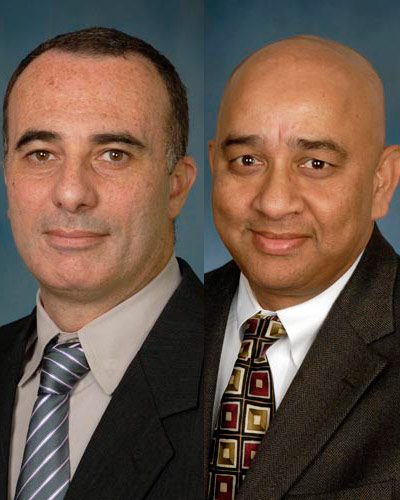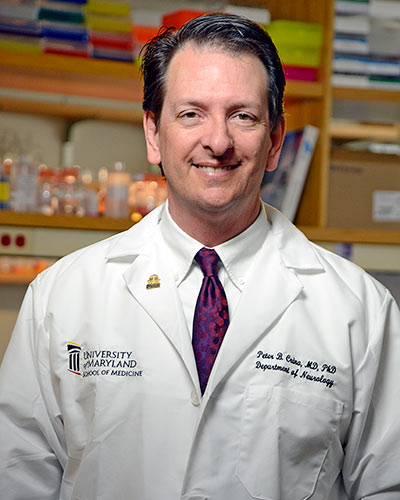September 30, 2016

Study Could Provide New Clues for Predicting Future Risk of Autism, ADHD and other Neurocognitive Ailments
In humans, senses are intimately entwined. Sight, vision, touch, smell and taste all weave together in the brain, giving us a powerfully dynamic and complex experience of reality. For decades, scientists have debated whether this interconnection is present from birth, or develops through childhood.
Now, a new study has found that multisensory interconnection exists for newborn babies. This finding is interesting not only because it illuminates a fascinating question about how the human brain is wired and how humans experience the world; it also has the potential to eventually become an early way to help predict the risk of subsequently developing autism, ADHD, schizophrenia and other brain disorders. In these and other diseases, the brain often has trouble integrating senses together. This lack of coordination can give people with these diseases an altered experience of reality, one that can be jarring or disconcerting. Earlier diagnosis could help clinicians and parents seek treatment more quickly, which could make a difference for children with these disorders.
The study appeared in the September issue of Brain Imaging and Behavior.
“This has been a fundamental question in developmental neuroscience,” said lead author Alexandre E. Medina, DS, an associate professor in the Department of Pediatrics at the University of Maryland School of Medicine (UM SOM). “With this study, we have shown clearly that in humans, sensory interconnection is there very soon after birth, if not before.” Rao P. Gullapalli, PhD, MBA, a professor in the Department of Diagnostic Radiology and Nuclear Medicine, is the other lead author.
The researchers studied 16 infants, an equal number of boys and girls. The subjects were given functional MRIs, an imaging technology that tracks blood flow patterns in the brain. This provides information about what parts of the brain are working, and when.
They focused on two brain areas that are central to sensory integration in adults: the intraparietal sulcus (IPS) and the superior temporal sulcus (STS). The IPS plays a major role in the integration of visual and tactile information; the STS, meanwhile, integrates visual, auditory and tactile information. In adults. The two regions are closely interconnected as well, because this information must be further integrated to give the brain a full picture of what is happening in that moment.
Dr. Medina and Dr. Gullapalli found that in the babies, the IPS and the STS were also closely connected. “Nobody knew when these circuits appeared,” said Dr. Gullapalli. “It gives us new insight into how infants experience the world.”
The scientists say that at this point, it is not clear if the networks keep developing after infancy, or if the integration is already full-fledged soon after birth.
Dr. Medina notes that interestingly, being born prematurely is known to increase the risk of having faulty sensory integration. And in fact, these babies are also at a higher risk for autism, he points out. He and Dr. Gullapalli are now working on a study to see whether multisensory networking can be used as a way to help diagnose neurodevelopmental problems such as autism or ADHD.
“This new study offer intriguing findings about how the human brain works,” said UM SOM Dean E. Albert Reece, MD, PhD, MBA, who is also vice president for medical affairs at the University of Maryland and the John Z. and Akiko K. Bowers Distinguished Professor. “This finding is not only interesting from a purely scientific perspective, it also shows potential as a clinical biomarker that will help patients, parents and doctors.”
About the University of Maryland School of Medicine
The University of Maryland School of Medicine was chartered in 1807 and is the first public medical school in the United States and continues today as an innovative leader in accelerating innovation and discovery in medicine. The School of Medicine is the founding school of the University of Maryland and is an integral part of the 11-campus University System of Maryland. Located on the University of Maryland’s Baltimore campus, the School of Medicine works closely with the University of Maryland Medical Center and Medical System to provide a research-intensive, academic and clinically based education. With 43 academic departments, centers and institutes and a faculty of more than 3,000 physicians and research scientists plus more than $400 million in extramural funding, the School is regarded as one of the leading biomedical research institutions in the U.S. with top-tier faculty and programs in cancer, brain science, surgery and transplantation, trauma and emergency medicine, vaccine development and human genomics, among other centers of excellence. The School is not only concerned with the health of the citizens of Maryland and the nation, but also has a global presence, with research and treatment facilities in more than 35 countries around the world.
Contact
Office of Public Affairs
655 West Baltimore Street
Bressler Research Building 14-002
Baltimore, Maryland 21201-1559
Contact Media Relations
(410) 706-5260
Related stories

Monday, December 08, 2025
Treating Adults with Autism: Maryland Clinical Center Offers National Blueprint for Care After Pediatric Transition
Adults with autism spectrum disorder (ASD) and other neurodevelopmental disorders (NDDs) often lose access to specialized care once they age out of pediatric services. A new report from the University of Maryland School of Medicine (UMSOM) faculty presents five years of real-world data from their clinical practice at the Clinical Center for Adults with Neurodevelopmental Disorders (CCAND), demonstrating how a state-funded, multidisciplinary care model can close these gaps and serve as a blueprint for other states.
